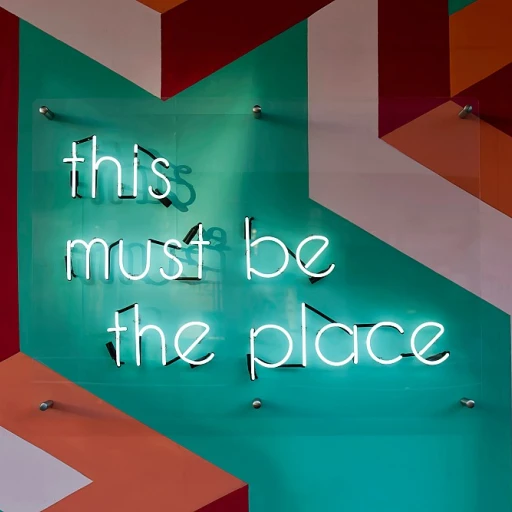The Challenge of High-Volume Hiring
High-volume hiring can feel like navigating a stormy sea, where the challenge lies in maintaining a stellar candidate experience while managing a deluge of applications. The demand for hiring numerous candidates swiftly and efficiently is a hurdle many organizations face, especially in industries such as retail, customer service, or healthcare. Hence, balancing the flow of applicants while providing each candidate with a respectful and engaging experience becomes a critical task.
### Rising Expectations
In the modern job market, candidates are well-informed and discerning. They hold high expectations for their interaction with potential employers. As part of the hiring strategy, understanding and meeting these expectations is crucial to entice top talent and create a positive impression of your company. This begins with
building a winning candidate experience strategy that aligns with your company's values and portrays a consistent, attractive reputation.
### Managing the Deluge
The volume of applications in high-volume hiring can be overwhelming, often leading to bottlenecks in the selection process. Recruiters are tasked with processing applications at speed without compromising on personalization and quality. Automation and technology play a crucial role here, allowing recruiters to sift through resumes efficiently, yet the human touch remains vital in retaining a candidate-friendly approach.
### Consistency is Key
At the heart of high-volume hiring, lies the necessity for a consistent experience for every candidate - whether hired or not. Companies must ensure that their communication is transparent and timely, thereby nurturing candidates' positive perception even if they do not receive an offer. Such practices not only enhance the candidate journey but also strengthen the organization's employer brand.
The journey in crafting an exceptional candidate experience continues with creating a strong employer brand and other pivotal practices, which will be explored further in subsequent discussions.
Creating a Strong Employer Brand
Building an Unforgettable Employer Image
In the realm of high-volume hiring, creating a standout employer brand is more crucial than ever. This is your first chance to make an impact and differentiate your organization from the sea of potential employers. But how exactly can we shape a strong, memorable brand?
To begin with, employers must establish a clear and consistent message that resonates with their values and culture. This goes beyond catchy slogans or eye-catching graphics; it's about aligning your brand promise with the actual experiences of your employees. Authenticity is key. Candidates today are savvy—they can easily spot the difference between branding that is genuine and that which is simply superficial.
Next, maintain a strong online presence. Social media platforms, company review sites, and even the careers section of your own website provide an opportunity to showcase your company culture and engage directly with prospective candidates. Regular updates about company activities, employee testimonials, and awards all serve to reinforce your employer image. Yet, it is essential to remember that consistency across all channels is crucial for maintaining credibility.
Moreover, it's important to consider how you communicate with job seekers. Are your communications personalized? Do they reflect your brand's tone and values? Personalizing your interactions with candidates not only helps consolidate your brand image but also enhances the individual candidate journey, as we explore further in creating a unique experience for job seekers.
Ultimately, a strong employer brand sends a message of reliability and professionalism, and is integral in attracting the right talent, especially when hiring en masse. Providing candidates with a coherent image of who you are as an employer will not only draw in applicants but also help keep them engaged throughout a streamlined hiring process."}
Streamlining the Hiring Process
Simplifying the Recruitment Workflow
In the fast-paced world of high-volume hiring, streamlining the recruitment process is paramount to succeed in capturing and securing the right talent efficiently. Simplifying the recruitment workflow not only enhances the experience for candidates but also alleviates the pressure on hiring teams, allowing them to manage a larger influx of applicants with minimal disruptions.
One crucial step in optimizing the recruitment process is leveraging technology to automate repetitive tasks. From sorting through resumes to scheduling interviews, automation can play a pivotal role in reducing the manual labor involved, allowing your team to focus on creating a personalized experience for each candidate. Implementing Applicant Tracking Systems (ATS) equipped with AI capabilities can be a game-changer, ensuring that nothing falls through the cracks and that each potential hire is considered carefully.
Furthermore, integrating clear communication channels within the hiring process is vital for maintaining engagement with candidates. By providing timely updates and feedback, you keep the candidates informed and enthusiastic about the opportunity. A well-communicated hiring process reflects positively on your employer brand and ensures candidates feel valued throughout their journey.
To foster transparency and efficiency, ensure your recruitment workflow includes predefined timelines for each stage of the hiring process. This not only helps set expectations for candidates but also keeps your internal teams aligned, moving the hiring pipeline forward smoothly.
The
experience candidate map serves as a comprehensive tool in identifying and addressing potential bottlenecks within the process. By mapping out each touchpoint, organizations can better understand where candidates might experience friction and implement solutions swiftly.
By optimizing the recruitment workflow, companies can improve overall efficiency, reduce time-to-hire, and ultimately, create a more positive and engaging experience for their candidates. This not only benefits organizations in their quest for talent but also reinforces a strong, attractive employer brand in the competitive job market.
Crafting Detailed Job Descriptions
Comprehensive Job Descriptions: The Foundation for Engagement
High-volume hiring presents unique challenges that require precise strategies at every stage of the recruitment process. One foundational element to address is the crafting of detailed job descriptions, which can have a significant impact on attracting the right candidates and ensuring their understanding and interest align with the role.
A well-constructed job description goes beyond listing job duties. It should serve as a transparent communication tool that conveys not only the responsibilities and requirements of the position but also the values and culture of the organization. This approach is crucial in building a strong employer brand, as discussed previously, which can set the tone for prospective candidates even before they apply.
Defining the Role Clearly
Clarity is vital in every aspect of a job description. Keep details precise but comprehensive, outlining the core responsibilities and expectations in a way that leaves no room for ambiguity. Candidates should be able to visualize a day in the role from reading the description. Incorporate specific skill requirements and expertise levels needed, and clearly differentiate between essential and preferable qualifications to help candidates self-select appropriately.
Highlighting the Organizational Culture
While detailing job duties is important, don't overlook the chance to share what makes your organization unique. By embedding cultural elements within the job description, you not only appeal to those who align with your values but also foster a sense of engagement from the onset. This can significantly affect candidates’ perception of what it means to be part of your team, contributing to better alignment and job satisfaction later on.
Engaging Through Language and Tone
The language and tone used in a job description should be consistent with your company’s brand voice. Whether it’s formal or more relaxed, maintaining a consistent tone can help set expectations and attract candidates who resonate with your style. Engaging language can make the description more readable and accessible, encouraging candidates to view it as an invitation to join a community rather than a mere list of tasks.
Refining job descriptions is a critical step not only for attracting the right pool of candidates in high-volume hiring scenarios but also for maintaining engagement throughout the recruitment process. Comprehensive and thoughtful job descriptions can make a significant difference in aligning candidates with your organizational goals and values from the very start.
Engaging Candidates Throughout the Process
Building Rapport from Start to Finish
One of the key aspects of engaging candidates throughout the high-volume hiring process is to maintain open and transparent communication. This approach not only helps to set realistic expectations but also strengthens the relationship between the employer and potential employees. Consistent updates about application status and feedback after interviews contribute significantly to a more positive experience.
The Art of Personalization
In a high-volume hiring environment, it's easy for candidates to feel like just another resume in a pile. Personalizing communications, however, can significantly enhance the individual experience. This could be as simple as addressing candidates by their names in emails, tailoring messages to their specific skills, or acknowledging their unique contributions in interviews.
Utilizing Technology Wisely
Leveraging technology can make staying engaged with candidates more efficient. Automated emails and chatbots can handle repetitive inquiries, allowing recruiters to focus on more personalized forms of communication. However, it's crucial to balance automation with genuine interactions to ensure candidates don't feel like they're simply dealing with a machine.
Empowering Candidates with Information
Transparency and clear communication about the hiring process can go a long way. Providing candidates with a timeline of the hiring process, details about what's expected in each stage, and any preparation materials can empower them and ease their anxiety, keeping them engaged and motivated.
Encouraging Feedback at Every Stage
Regularly seeking feedback from candidates can not only improve the process but also demonstrate that the company values candidate input. Encouraging this dialogue can reveal areas of improvement and further engage candidates by involving them in refining their own experience.
Best Practices for Volume Recruiting
Implementing Efficient Communication Strategies
Ensuring seamless communication is paramount when handling high-volume hiring. Frequent and transparent communication can make a substantial difference in sustaining candidate engagement and portraying a professional image of your organization. Timely updates regarding the different stages of the hiring process help manage candidate expectations and reduce anxiety.
Leveraging Technology to Scale Efforts
Using advanced recruitment technology can significantly facilitate the process. Applicant Tracking Systems (ATS) and Artificial Intelligence (AI) tools can automate repetitive tasks like resume screening and initial communication, which, in turn, allows your HR team to focus on more personalized interactions with candidates. These technologies can also provide valuable data analytics to make informed decisions, further optimizing your recruiting strategies.
Consistent Employer Branding
Maintaining a consistent employer brand throughout a high-volume recruitment drive is crucial. Ensure that your branding reflects your company values and gives candidates a sincere sense of what it's like to work at your organization. Your brand should shine through every stage—from job descriptions tailored to attract the right candidates, to the communication style used during interviews.
The integration of these best practices with the previous strategies we discussed, such as crafting detailed job descriptions and creating a strong employer brand, will foster a more efficient and candidate-friendly high-volume hiring process.








